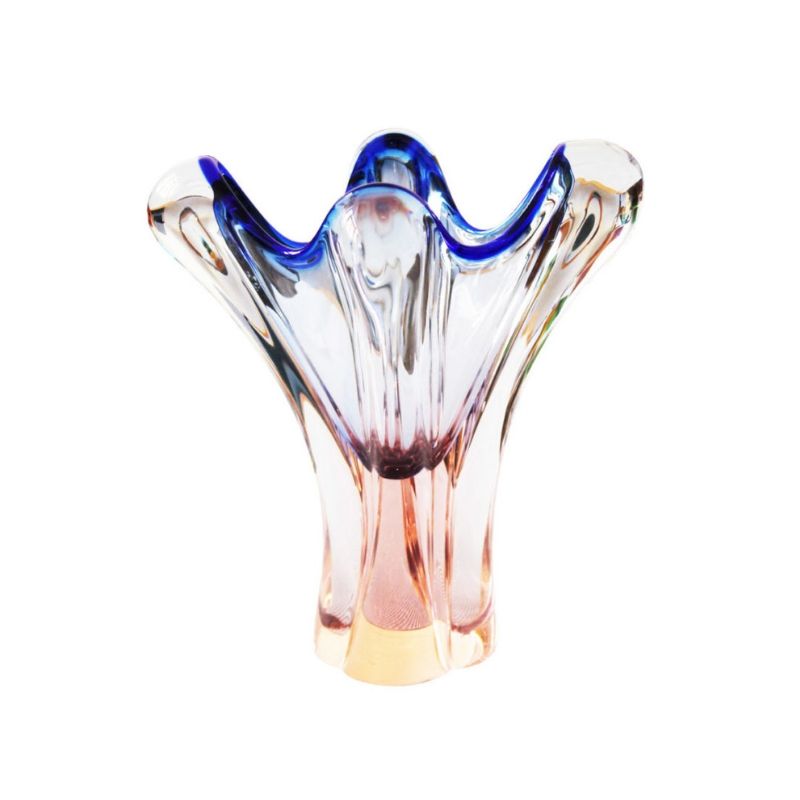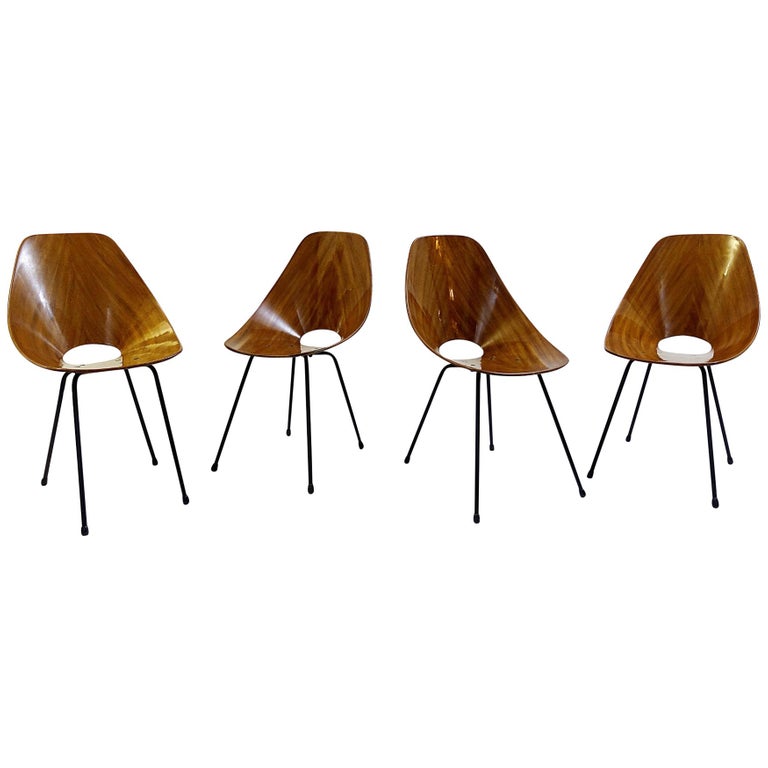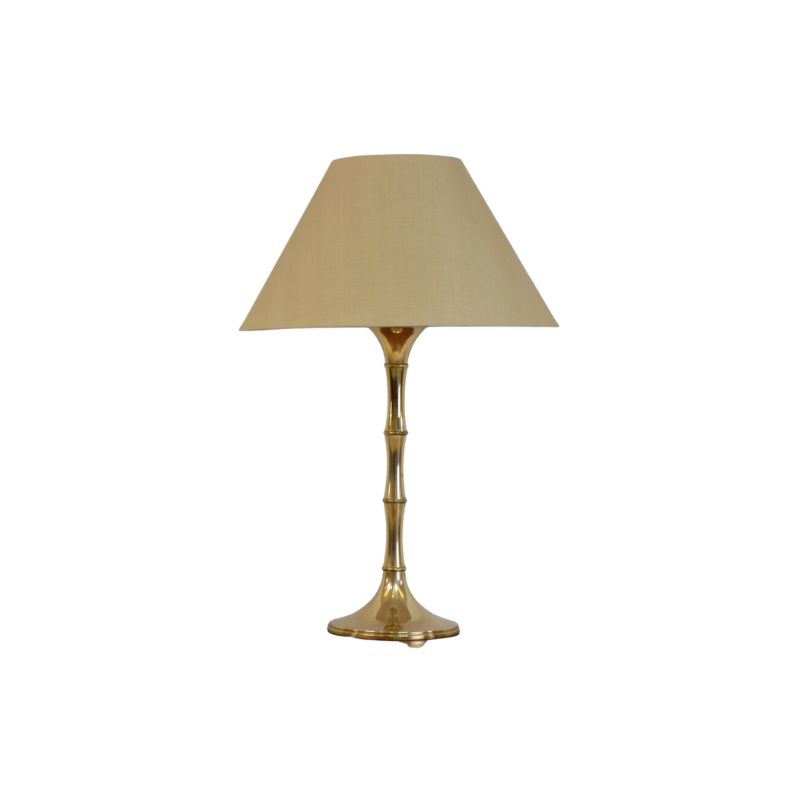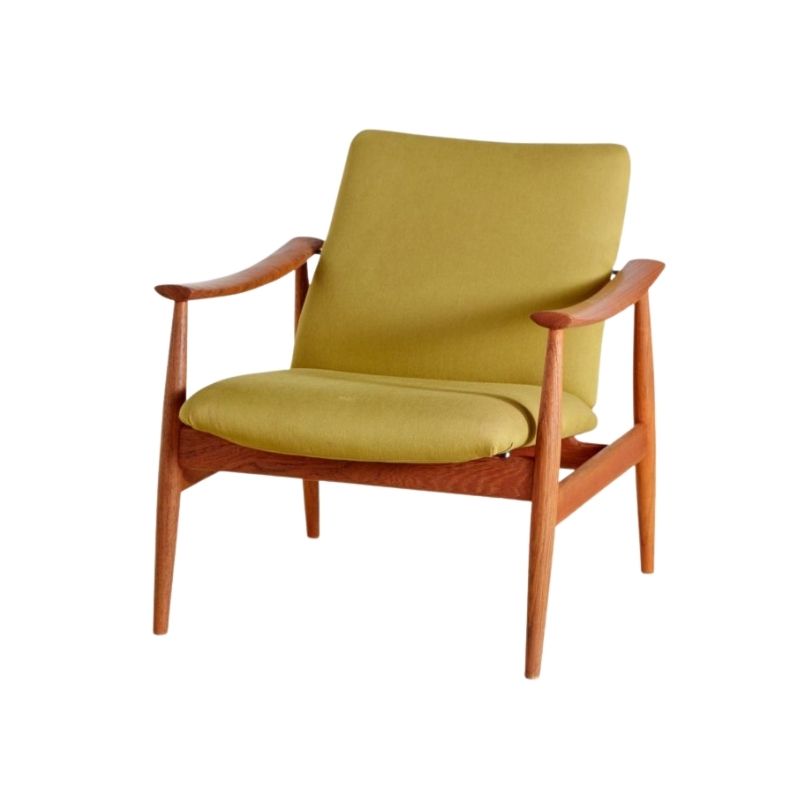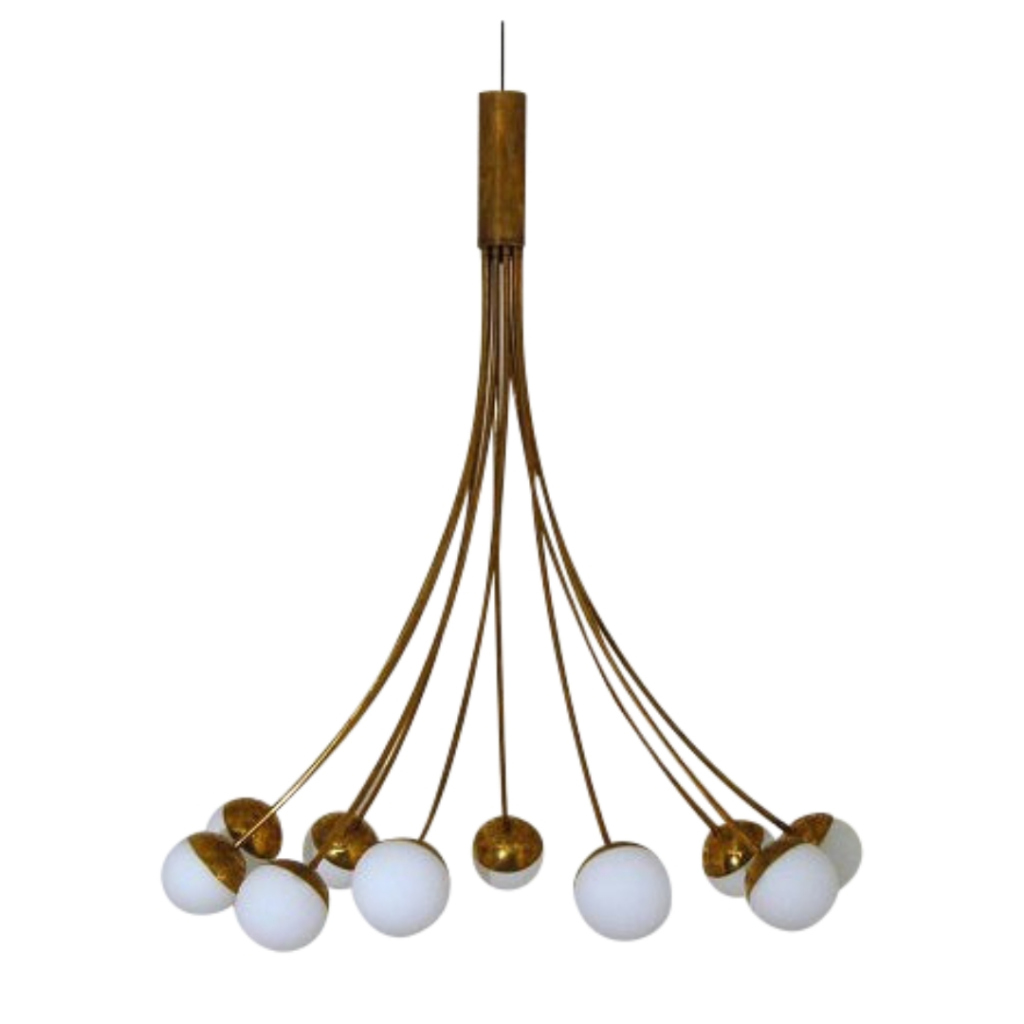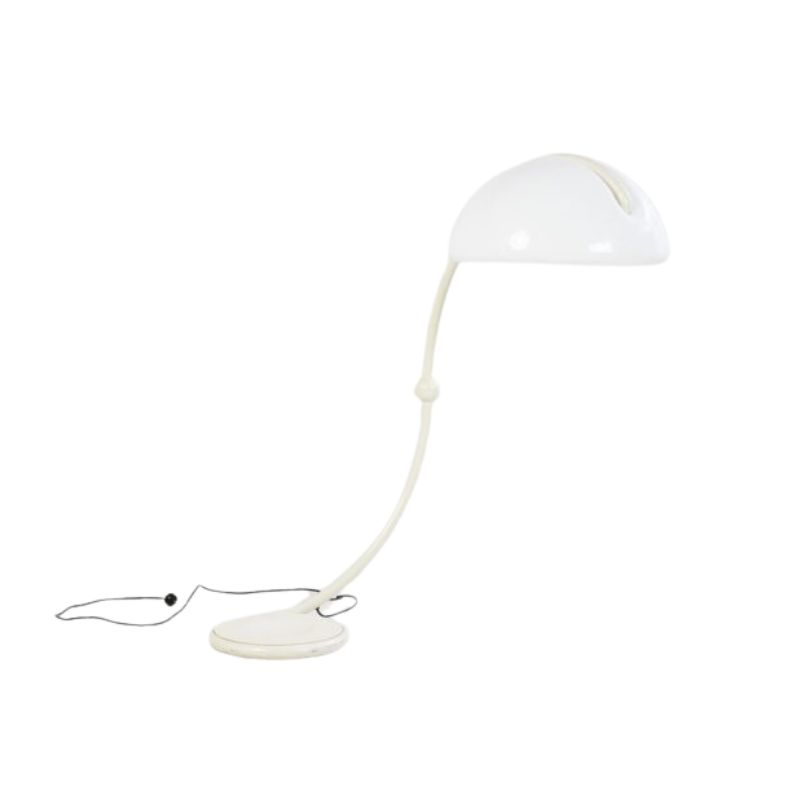Lucifer
Lucifer, quoting your argument below:
Foremost, reading your posts over the months, I definitely know where you stand on this issue and I respect that. However, despite how strong the product copy is, or the similarity to the original product imagery, etc, many reproduction retailers will time and time again tell you that it is a reproduction. Paradigm Gallery, PGMOD, is no different.
I think you are clearly dumbing down the audience out there. If you know MCM, you're not going to actually believe you're getting a Knoll Womb Chair for 1k+. People know what they are getting and often seek it out. Companies like Paradigm Gallery aren't creating market place confusion. Rather, they are created marketplace relief.
Also, I read somewhere that Paradigm Gallery is partnering with DWR to funnel licensed classic traffic to DWR.com. That's a weird arrangement and I don't know how the Herman Millers and Knolls of the world will take that.
a) Most importanly - marketplace confusion. When a place like PGmod starts blurring the lines about the authenticity of their pieces it creates confusion to those people who are approaching the authentic brand for the first time. It also creates confusion in those people who unknowingly purchase a knock-off. If the copy on PG's website reads similar to an auth'd distributor - but the cost is much less- an unknowing consumer may think they're getting a deal. In fact they're getting totally ripped off. When you approach +1k for furniture you're generally investing in something that will offer you returns over many many years. The purpose of buying a licensed product is that it will retain and grow it's value over the course of its existence. Case in point: an authd Eames lounge chair always costs far more (even in lousy condition) than a plycraft knock-off. As it should - the level of quality and craft on the chairs is very very different. That quality and craft is also part of the authd products branding. LRF relates that he bumped into a cheap knockoff. Imagine someone encountering that chair who DOESNT know it's a knock-off. Their perception of the authd production is now skewed.
Here's another example of real vs crap
Many people are buying flat screen LCD TV's these days. Many stores carry "no name" genetic TVs that look as good as the big names brands, but are priced 1/3 to 1/2 less.
Viewing Consumer Reports ratings and you start to see that Sony, Panasonic, LG, and Hitachi consistently rate much higher than the "no name" brands that stores like Best Buy, Target or Circuit City sell. And many of the "once famous brands" that are being used on the cheaper TV's like Westinghouse aren't rating too high either.
I was in the market for a 32" LCD flat screen TV and i hated the idea of spending so much money for a Sony or Panasonic, but then again, I didn't want to buy a lower end model that looks goods but won't last very long.
I opted to buy a floor model Sony Bravia and am very happy with it.
There again, as it relates to furniture, I could buy a knockoff chair or sofa and it would look nice, but because I hate to be ripped off, it would annoy the heck out of me if it was made with the same high quality materials as the original or current model.
When it comes to, say, the Womb chair, Knoll isn't just selling something pretty. They're selling Saarinen's design and years of study on how to manufacturer the piece properly. Even with the demand to change the fibreglass material to an envirnomentally sound plastic shell, the current Knoll chair is MUCH more likely to stand up to use than the knockoffs. Also, who know what level of lead and other dangerous chemicals are in the knockoff chair from China?
I'd stick to the real McCoy's when it comes to furniture. You can cheat by buying knockoff wall art, but don't skimp on getting high quality furniture for your home.
You'll note that I have not mentioned royalties, etc., because I'm sure the Knoll's, Fritz Hansen's, Cassina's, Vitra's and Herman Miller's of the world do NOT like competing with used pieces that they produced years ago. They want you to buy a new one. They make no more money off a used pieces purchased at an antique store than they if you buy a knockoff!
Doesnt Hold Water
Sorry Turbo, but that argument doesnt hold water. First off - I've not heard about this DWR/Paradigm thing, which doesnt seem to make sense anyway. It seems unlikely that DWR would pair up with a company selling knock-offs since DWR (once doing the same thing) has moved rapidly and clearly towards authentic pieces.
Secondly - I disagree that knock-off sites clearly state the difference between authentic and knocked off pieces. In my experience and research I've found sites like Paradigm do everything in their power to allude to a claim of authenticity. They do this in many ways:
a)visual - lots of knock-off sites steal photos of actual authentic pieces. Paradigm hasnt done this as much as other sites - but is still guilty with the LC4 Chaise
b)Designer Bios - putting the bio of a designer next to the knocked off product is a very clear allusion that the design had something to do with the product. Innocence by association is a dirty and confusing trick.
c)Confusing language - inspired, ___style, interpretation. All subtle words. Nothing clear or difinitive about who designed the chair.
d) Price - if someone is tooling around the net and comes to DWR, sees an Eames Lounge by Herman Miller priced at $3500, then swings over to Paradigm and sees an "Eames Lounge" for $2500...thats not THAT much difference. A skeptical shopper might be tipped off that its a knockoff, a hopeful shopper might think they've found a heck of a deal.
e)Naming - using designer names on a knock-off is deliberatley misleading. Using official names on a knock-off is misleading - i.e. "Barcelona" or "Brno" or "LC4". Paradigm engages in this on just about every page.
f)Innocence by association - here's a choice quote from Paradigm: "This high quality interpretation of the Eames Aluminum Management chair continues the tradition of the original from Herman Miller." Aligning themselves first with the Eames name, then with HermanMiller...If thats not misleading I dont know what is.
g)Deliberate falsehoods - (oh wait, I DO know what misleading is!) Here's an even better quote from Paradigm: "this interpretation Eames lounger from Herman Miller is a modern classic masterpiece". Which is it? An interpretation? or from Herman Miller?
And, I have searched high and low on Paradigms webpage - in their FAQs, in their "Paradigm Story", in their "Info Hub", in their "Compare US" page - not a single statement about who actually makes their pieces or how they differ from auth'd dealers. Your argument would be stronger if the people and websites you're promoting werent sabotaging your argument.
Image one: LC4 from Paradigm
Image two: LC4 from DWR
Here's another example of...
Here's another example of real vs crap
Many people are buying flat screen LCD TV's these days. Many stores carry "no name" genetic TVs that look as good as the big names brands, but are priced 1/3 to 1/2 less...I was in the market for a 32" LCD flat screen TV and i hated the idea of spending so much money for a Sony or Panasonic, but then again, I didn't want to buy a lower end model that looks goods but won't last very long...
TVs are one of those appliances that straddle the line dividing durable goods and disposable goods these days. Save your money and wait for green lasers to reach production stage. Then you can project large, hi-def images onto your wall with a device the size of a modern day cell phone, meaning then no big black boxes on the wall.
When it comes to, say, the Womb chair, Knoll isn't just selling something pretty. They're selling Saarinen's design and years of study on how to manufacturer the piece properly. Even with the demand to change the fibreglass material to an envirnomentally sound plastic shell, the current Knoll chair is MUCH more likely to stand up to use than the knockoffs...
Will they? Are there the equivalent of crashtest scores for this sort of thing? Too many variables at play to say for sure, in every single instance, that this is true. And again, if there is one single instance, it's enough to arouse some skepticism re the prices of the Real McCoy.
I'd stick to the real McCoy's when it comes to furniture...
Generally speaking, agreed.
You can cheat by buying knockoff wall art, but don't skimp on getting high quality furniture for your home...
Disagree. Quality is not absolute?
Finch
I don't think you give the legit companies (Cassina, Altek, Herman Miller, Knoll, Fritz Hansen, Vitra, et all) enough credit for trying their best to continue to produce the best possible quality pieces from the designers that they have the arranges with.
There's no question whatsoever that Saarinen, Platner and Bertoia worked with Knoll, Eames and Nelson worked with Herman Miller, etc. to figure out how to produce their designs using the best possible materials at what was considered to be an acceptable price. Surely Nelson, Eames, Bertoia, Saarinen, Flo Knoll and Platner worked like hell to make sure that the produced pieces were strong and would last a long time.
Over the years, pieces have been discontinued and reissued. Other pieces have been available straight through. Either way, updating materials have been essential due to knowledge of problems (latex foam), the stopping of using previous woods (Rosewood), as well as the belief that Fibreglass was an environmentally unwise material (Eames shell chairs). I firmly believe these changes were made with the best of intentions.
Yes, I bitch about the high prices, but I honestly don't think that any of these high-quality furniture companies are ripping anyone off.
Hell, everyone knows that Herman Miller is one of the most admired companies in the world and consistently is recognized for producing superior quality goods and treating their workforce very very well.
Lucifer
Great arguments. You're right on all points and it's clear that Paradigm is piggybacking off the brand equity of Knoll, Herman Miller, etc.
While misleading, I KNOW that consumers who purchase at Paradigm, like myself still know what's going on. That's where we disagree. Buyer beware. Despite what you call misleading efforts, does the reproduction retailer pass the test when someone asks?
"Is this an original", "how does this differ from the original", etc.
That's the test. Are they honest in their assessment of true differences in manufacturing, packaging, etc.
If you even entertain maneuvering around a site like Paradigm once you see a $850 "Barcelona Chair", you know it's not an original. The wordsmithing by Paradigm is obviously marketing focused.
I have originals and I have reproductions, depending on how my financial situation was. There are qualities of originals that reproductions could never match. Then again, there are reproductions, especially those from Alphaville that are done very well.
I also owned DWR stock. Needless to say, I sold it as fast as I could last year, but that's another story.
Finch
I don't think you...
Finch
I don't think you give the legit companies (Cassina, Altek, Herman Miller, Knoll, Fritz Hansen, Vitra, et all) enough credit for trying their best to continue to produce the best possible quality pieces from the designers
They don't require my credit, they require my credit card. Make no mistake, there is no altruism going on here, or if there is, it is certainly very much ancillary to the bottom line. Besides, this assumes that I'm trying to discredit the above companies, which I have never done at any point during this discussion. I simply propose a little more skepticism on the subject, and not without reason. I am not religious about furniture. I require facts. It is, after all, an investment and somewhat the sum of its parts, as opposed to an original or an antique, with history and/or provenance, and therefore, a more oblique value scale.
There's no question whatsoever that Saarinen, Platner and Bertoia worked with Knoll, Eames and Nelson worked with Herman Miller, etc. to figure out how to produce their designs using the best possible materials at what was considered to be an acceptable price.
Perhaps, but I think I've raised the question before: are Herman Miller, Knoll, et al, the same companies that they were fifty years ago? Companies change. Quality control standards change. Fritz Hansen, for example, began annoyingly cutting corners on certain finishing details on the Egg and Swan, and revised the ant chair at one point. And again, if one company can produce unlicensed reproductions that are equal to or rival their licensed counterparts, then I think even one example is enough to impugn the pricing of some of these official license holders.
...updating materials have been essential due to knowledge of problems (latex foam), the stopping of using previous woods (Rosewood), as well as the belief that Fibreglass was an environmentally unwise material (Eames shell chairs). I firmly believe these changes were made with the best of intentions...
When a change is an obvious improvement, or at any rate, does not infringe in any obvious way to the look or feel of the design, then I say, carry right along. However, not all changes are invisible, or in the name of the greater good. If fiberglass is bad, stop making them, I say, rather than diminish the look and tone of the design.
I honestly don't think that any of these high-quality furniture companies are ripping anyone off....
Well, perhaps that is a leap of faith I fail to make. Though I've never cited anyone as "ripping off" anyone, why should I automatically assume they are not? I do think that when we get into the tens of thousands of dollars mark, it is maybe time for a bill of materials.
I'm sorry, I just do not see this as unreasonable.
Well, Finch, it's apparent
that we totally disagree and since there's no way to change your mind, let's agree to disagree.
I bought a brand new square Eames work table last year from HiveModern, a distributor for Herman Miller and I think the table's the same animal as it was when first produced.
Also, I bought two 72" Nelson benches from Home Office Designs - they were on clearance for $125.00 a piece due to a scratch on one of them and a reglued bit of the other. I was not in the market for them, but I couldn't pass up such a hellava deal.
They are made with the same quality as they always were. The only change is the light birch color, rather than the more mellow color found on old ones.
So, two purchases of new furniture from Herman Miller and they're 100% perfectly made.
Oh yea, I bought two genuine Knoll pads for my Bertoia side chairs in Sunflower yellow vinyl, and they too, looks like the original thing.
Finally, I have a friend who runs a reupolstering business here in town who has plenty of experience with these company now and redoes many older pieces, and he too has nothing but positive things to say about the current level of quality.
Finch, more nuance
First off, this the best, most thorough, least acrimonious debates on this subject I've seen. Go us.
Finch, I'm curious what your issues are with Fritz in terms of the Swan. My office has 2 in the lobby and they look/feel good. I've no knowledge of past productions - I can't say what's changed. Arent Series 7 chairs made in a high-tech half-robotic factory that keeps noise & pollutants away from the people who work there?
Quality: Of Herman Miller, Fritz Hansen, Knoll, Artek; you asked "Are there the equivalent of crashtest scores for this sort of thing?" Yes. The Womb chair, Eames Plastic chairs, Aalto stools, Barcelona Chair, Series 7, and Egg & Swan -to name a few - are all contract quality. They have all undergone flammability, abrasion, structural, and durability tests making them suitable for use in public spaces. In addition, many pieces by Knoll, Herman Miller, & Fritz Hansen are environmentally certified in their manufacturing, emissions, and recycled content. This means that, in addition to guaranteeing a lower impact in production, these products very often qualify in the point system for LEED certification.
Materials: Material substitutions can be a two edged sword. We all seem to agree that some changes - foam, fabic, etc. may be necessary in terms of quality. In many cases you just can't go on making things 'the way they were'. The Rosewood used in shells of the Eames lounge was endangered. I beleive HM did the right thing by suspending production until sustainable sources could be found.
Finch, your argument about the fiberglass shell chairs is valid, and has been explored before. This is a case of "what WE think the Eames would do" We dont have a crystal ball- we do have precedence in the upholstered DCM. Here the Eames used injection molded plastic components with internal shockmounts, instead of the plywood/rubber combo. Given that the Eames were always prone to 'tinkering' with their designs, tweaking to make them better, can we assume that they would have moved to polyprope for the side chairs? I say yes.
Some of these things have a clear lineage of working processes and material advancements. Do I think offering the LCW in rosewood was a good idea for HM? Yes - the Eames played with exotic woods before. Do I think Knoll was correct in shrinking the Womb chair? Not a chance! Do I like all of the new aniline colors the LCW now comes in? Well... the aniline is correct, and much better than the skanky 'laquer' finishes - but I dont think it looks great in teal blue. Some things work. Some (see below) dont.
As for getting ripped off - thats merely personal perception. It is up to the maker to decide what to charge for material, labor, marketing, royalties, etc. Whether or not you agree with that price is up to you. I could easily get coffee for $2 at Dunkin Donuts, but to me, its worth the extra $2 for the atmosphere, personality, and quality of my local coffee shop.
Barry:
There's really...
Barry:
There's really nothing to agree or disagree with. I think you're assuming, quite wrongly, that I am propounding knock-offs in place of originals or licensed repros. At most I'm simply promoting a dialogue of a more dialectical nature, rather than a position based on heart felt opinions and generalizations.
That said, I have suggested that there are unofficial manufacturers, including Modernica and Modern Woodworks to name two, who make exceptionally high-end renditions of certain classics, using high-grade materials, and in both instances, qualified American labor, and that the disparity in prices between them and the licensed guys should at the very least compel buyers to scratch their head before taking a dive. That is not unreasonable or even disagreeable.
Lucifer:
My beef with Fritz Hansen is the inconsistency of a few of their products -- namely the bases of the two Jacobsen designs, which changed in the eighties from the one piece tine style base to the two piece stem and spangle base. It doesn't ruin the design for me, but it is a noticeable departure. Also, the finishing of the bases has varied over the years. Then we have the Swan base, which used to attach to the chair underneath the upholstery, but which now bolts onto the underside with a large aluminum plate.
As for the dividing line separating thoughtful revisions which ensure a product succeeds in the contemporary market, and revisions of a more superfluous or unnecessary nature -- this is a tricky thing to establish. Where do you draw the line? Aniline dye and chrome plating have never been good for the environment either. Another example: I recall many months back an interesting argument that the ESU design should not be modified beyond its original schemes to allow for things like big screen TVs, etc., and yet, it would seem that this would be one design, with its modularity, that especially lends itself to the sort of 'tinkering' which so typified the Eameses approach, in order to keep it relevant.
Food for thought. As they say, folks, you mileage may vary.
Happy Valentines!
Good reply, finch
Isn't nice to have differences without it getting nasty? Refreshing, to be sure.
Regarding the old thread about the ESU, unlike some people, I'm living in 2008 with 50, 60 and 70 year old furniture....furniture that is beautiful and still amazing modern and forward looking, but I'm still living in 2008. If I wanted to get an ESU cabinet for my LCD TV, you bet I'd make some alterations, so long as it wasn't a mint original.
At one time, I was looking for a nice MCM desk that I could adapt for my computer - with the essential pull-out drawer that I feel is important to have for my keyboard (I'm use the keyboard being down lower and can be pushed back out of the way when not in use).
I couldn't find an older desk that would work, so I settled on a Blu Dot Paperclip desk, which is nice, but not quite ultimate. But, believe me, if I had found a nice vintage desk in anything less than drop-dead mint condition, I wouldn't have had any problem drilling a couple of holes in the underside of the top and installing a pull-out keyboard tray.
The reason I mention this is that furnishings HAVE to work for your own personal needs. (My house ain't no museum, by gum!!)
so, as usual, there is a balancing act between keeping things super original and making alterations for your own lifestyle.
Getting back to a TV, I was lucky enough to find an OXO cart from Kartell, at a very affordable price (they're like $700.00 new). I was going to use it in the kitchen, but discovered that it's rated for 100 lbs, so I have my 32" Sony LCD on top of it and my cable box and DVD player in the lower shelf. It looks swell.
Interesting
I'll have to do some research on the Swan and Egg bases...seems interesting, and I'd like to know what their reasoning was.
I agree - nothing is perfect. Aniline dye was used in the original LCW chairs, and I think better enhances the underlying material of the wood. If chair bases could be done (affordably) with stainless steel instead of chrome plating I would be all for that - it doesnt radically change the look of the piece.
As for the ESUs, my argument was that they are configurable -to a degree- within the scheme of the original designs. I argued against the knock-off versions stretching and skweing the proportions/ratios of the originals. The example that I gave was a knock-off ESU that had moved from a 4 cubbied unit into a three cubbied unit, solely to accomodate a television. The manufacturer had added a third dimpled door, and the ratios between the cubbies was off. In fairness - historic examples show that when pushed, the Eames were willing to break their own rules once in a while. However, I dont think that was the standard. They designed a cohesive and unified system of modules that worked harmoniously together within an infinite number of variations. The key adaptability of the ESU is the ability to build and modify your space -within the specified unit system the Eames designed. Otherwise you might as well just slap some L girders, some X braces, and some dimpled doors together wily-nilly.
Counterfeit?
the knock-off out there on MCM classics are not counterfeits. the patents for most of the pieces ran out decades ago and are now public domain, i.e. generic drugs. Copyrights for furniture designs are a recent protection, and those too have a life span and eventually the designs are again public domain.
Heck, Knoll, Herman-Miller, Fritz Hansen, et al, discontinued production of nearly all of the MCM classics at one point when sale waned, and then started up producing knock-offs themselves. Knoll has for the past few decades purchased their "Studio" classic from the Italian companies which started knocking them off after Knoll dropped the designs from their catalogs. The Knoll Womb chair I bought in the 1980s has a made in Italy label, it's a knock-off and I paid a premium to Knoll at the time not knowing I could have bought the exact same chair from an Italian knock-off retailer down the street for much less. Who was ripping off whom, Knoll was.
So, let's face it. Every new MCM classic out there is a knock-off. Cheers to the Chinese who have FINALLY done what Nelson and the Eames' wanted from the beginning. Good design affordable to all, not just the elites.
Cheers!
Good experience with Womb replica
I too could not afford an original chair but HAD to have one. I researched a few replicas but was most impressed with manhattan home design. The quality is great and the design is perfect. I would definitely give them a look if you are still in the market.
If you need any help, please contact us at – info@designaddict.com



